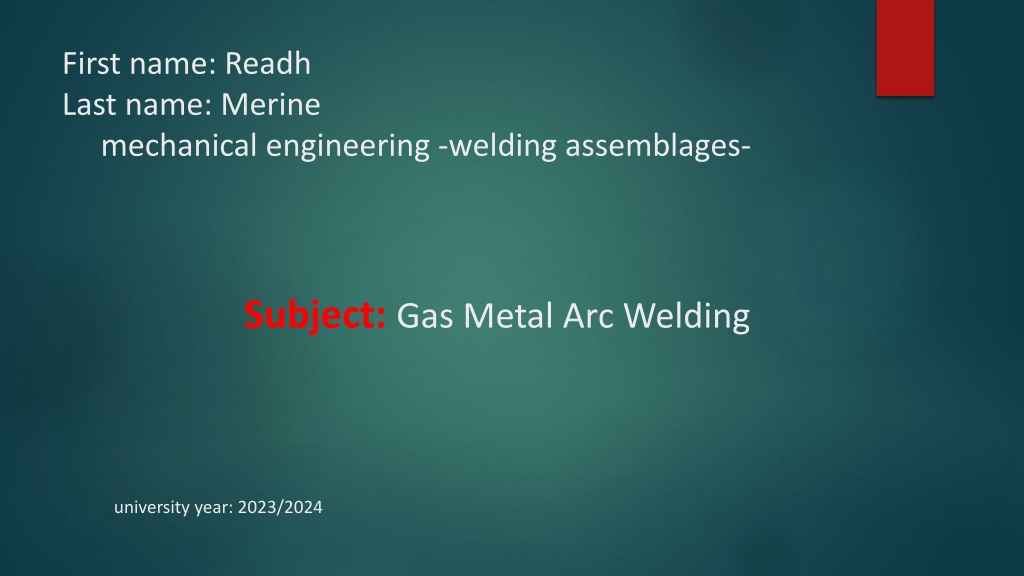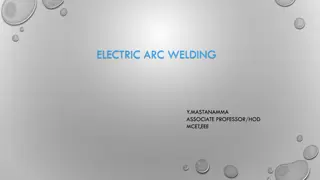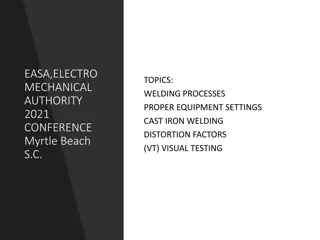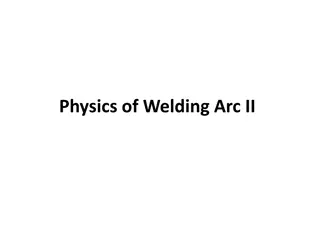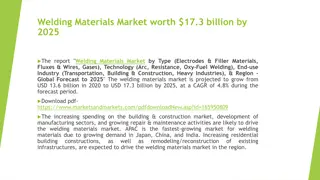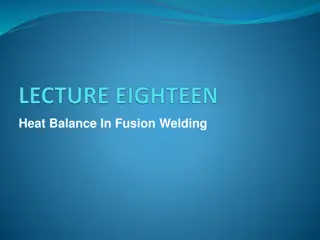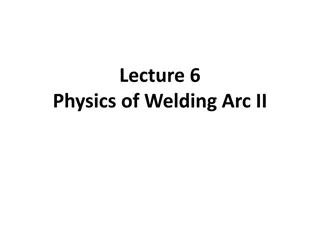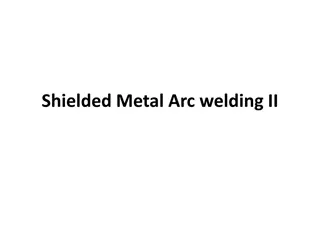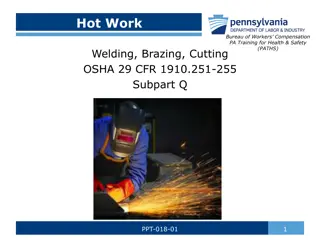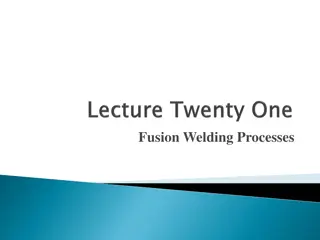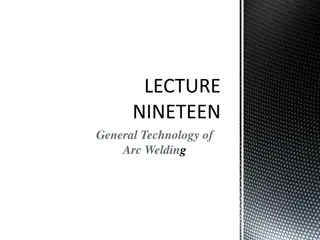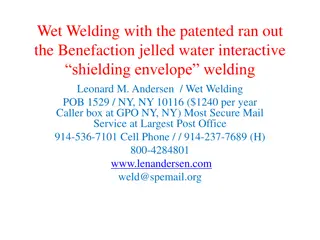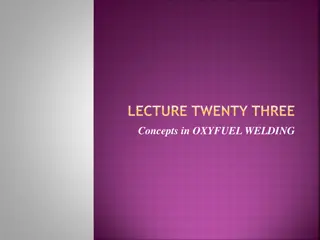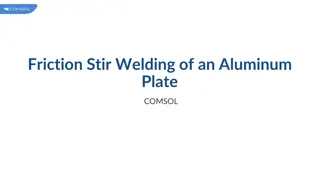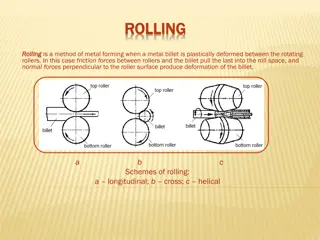Gas Metal Arc Welding (GMAW) Equipment and Functionality Overview
Gas Metal Arc Welding (GMAW) is a versatile welding process that utilizes a consumable electrode wire, electric arc, and shielding gas to join metallic materials efficiently. This method requires essential equipment like power source, consumable electrode wire, wire feeder, welding gun, shielding gas cylinder, flowmeter, welding table, and personal protective equipment. These components play crucial roles in ensuring a successful welding operation by providing the necessary heat, filler material, control over wire feed rate, shielding gas protection, workpiece stability, and welder safety. Mastering the equipment and functionality of GMAW is fundamental for achieving high-quality and durable welds.
Download Presentation

Please find below an Image/Link to download the presentation.
The content on the website is provided AS IS for your information and personal use only. It may not be sold, licensed, or shared on other websites without obtaining consent from the author. Download presentation by click this link. If you encounter any issues during the download, it is possible that the publisher has removed the file from their server.
E N D
Presentation Transcript
First name: Readh Last name: Merine mechanical engineering -welding assemblages- Subject: Gas Metal Arc Welding university year: 2023/2024
What is welding ? Welding is the meticulous art of joining materials through the precise application of heat and pressure, creating a seamless, durable bond that integrates them into a single, unified structure.
Types of welding procedures gas-shielded welding: Self-shielded gas: GMAW GTAW SMAW PW FCAW SAW
Definition of gas metal arc welding (GMAW) Gas Metal Arc Welding (GMAW), is a highly efficient arc welding process that uses a consumable electrode wire, an electric arc, and a shielding gas to join metallic materials. In the MIG variant, an inert gas, typically argon or a mixture of argon and helium, is employed to protect the molten weld pool from atmospheric contamination, ensuring a clean and stable weld. Conversely, in the MAG variant, an active gas, such as carbon dioxide or a mix of carbon dioxide and argon, is used to not only shield the weld but also actively participate in the welding process, facilitating higher penetration and weld bead profile control.
Equipments and functionality GMAW requires several key equipment and components to perform the welding process effectively. Here's a list of the essential equipment needed in the process: Power Source: The power source is the heart of the GMAW setup, providing the electrical current needed for welding. which can be adjusted to control the heat input during welding. Consumable Electrode Wire: The consumable electrode wire serves as the filler material. It melts and joins with the base metal to create the weld. The wire is selected based on the material being welded and the desired properties of the weld. Wire Feeder: The wire feeder is responsible for feeding the consumable electrode wire from a spool to the welding gun at a consistent and controllable rate. It ensures a steady supply of filler material into the weld pool.
Welding Gun: it is the device used by the welder to control the position and movement of the electrode wire. It also houses the shielding gas, the electrode, and the intensity. Shielding Gas Cylinder: GMAW requires a shielding gas to protect the molten weld pool from atmospheric elements, preventing oxidation and contamination. Flowmeter: These devices control the flow rate of the shielding gas from the cylinder to the welding gun. Welding Table or Workpiece Fixture: A stable work surface or fixture is essential to hold the workpieces in the correct position. Personal Protective Equipment (PPE): Safety gear, including a welding helmet, welding gloves, protective clothing, and safety glasses, is indispensable to shield the welder from arc radiation, sparks, and hot metal splatter.
The process of welding In an electric circuit the current flow in a loop. In GMAW the current flows from the machine to the torche (electrode) to the piece and back to the machine. And thats called straight polarity.
Advantages and disadvantages Disadvantages of GMAW: Advantages of GMAW: Sensitive to wind and drafts High welding speed Equipment costs Good weld quality Limited penetration Versatile Welding position limitations Ease of use Little to no slag
